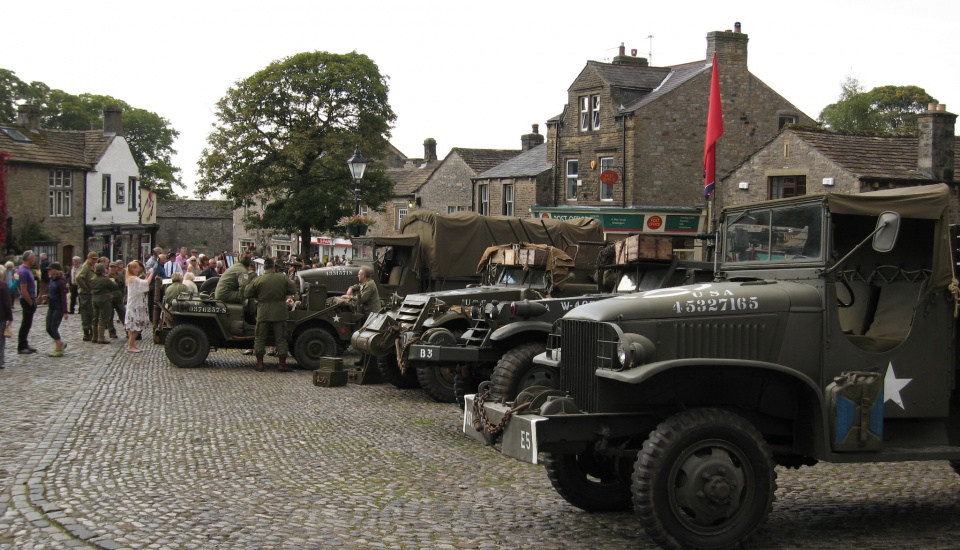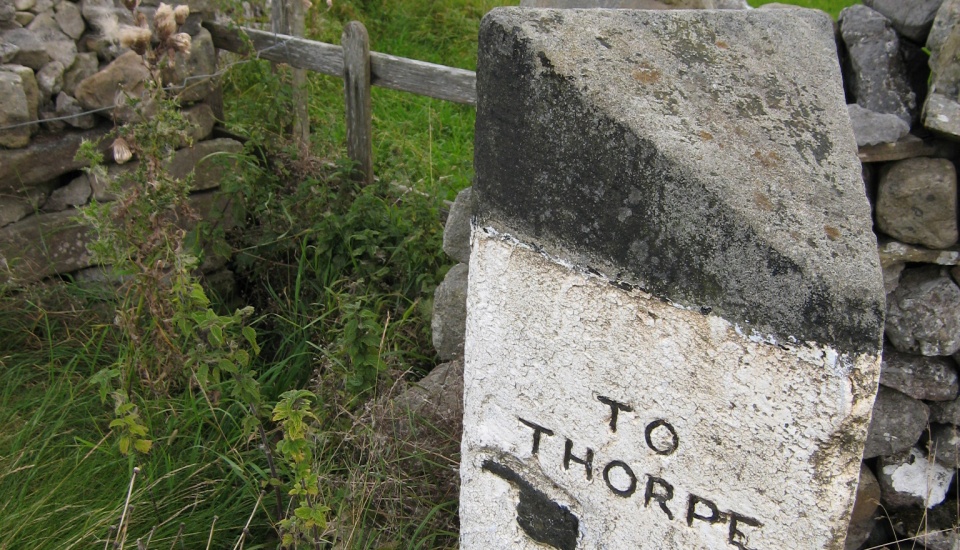What are the highlights?
The Druid’s Altar. Located close to Bordley, these three standing stones seem to have originally formed a large Bronze Age tomb, perhaps even a chambered cairn. The altar’s situation in the landscape almost in the centre of a circle of outlying hills was evidently of some importance. To find the altar (marked as a ‘cairn’ on the Ordnance Survey map) leave your bike about 50 yards before the cattle grid towards the end of the road to Bordley. Pass through a wooden gate on the left onto open access land and turn immediately right. Walk beside the wall for about 100 yards to the stones.
Bordley. Bordley consists of just two farms and, until recently, was accessible only via a farm track. Ironically, proximity to the old drovers route of Mastiles Lane (now a bridleway) was the reason for the hamlet’s initial development. Monks from Fountains Abbey near Ripon were among the first inhabitants, using the Lane to reach their grazing land on the surrounding fells. In the 16th century over 60 families lived in the valley. Plans in the 1960s to update the Lane to a road linking Malham and Grassington floundered in the face of public opposition leaving Bordley to its splendid isolation. So compact and hidden in a hollow, farmstead today looks like something from a children’s story book.
Fell views. As you descend rapidly from Bordley you have a wonderful view of Wintersett reservoir to your right and the Rystone Cross and Cracoe war memorial perched high on the fells to your left. You get another fine, uninterrupted view of these features on the bridleway from Rylstone to Cracoe.
Thorpe. This unspoilt, seldom visited village looks like an Edwardian photograph come to life. All that’s missing from the scene is perhaps a gaggle of geese, staring residents and a girl in a pinafore playing with a hoop and stick. A walled green with trees and a bench that makes an ideal swig stop is surrounded by the manor house, two ancient barns and an old ‘GR’ post box. Look out for a quirky sign that tells the story of how Thorpe folk stole a maypole from Burnsall.
Burnsall. This village doesn’t quite fit the ‘secret’ theme of the ride but is an essential part of the itinerary nonetheless. The main feature is the bridge built in the 16th century by local benefactor Sir William Craven who made his fortune from drapery in London. The setting of the bridge makes it look like a seaside pier: both are long structures designed to catch the eye that stride out across water and are flanked by flat, open areas popular with visitors. For the secret – and best - view of the bridge, the village and its two churches head for the lane towards Hebden.



